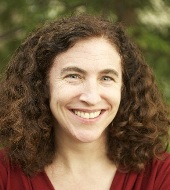| Distinctive, Not Disposable: Religious Studies in American Public Higher Education in the Twenty-first Century |
![PDF-NOTE: Internet Explorer Users, right click the PDF Icon and choose [save target as] if you are experiencing problems with clicking.](http://rsnonline.org/templates/rsntemplate-smallmasthead/images/pdf_button.png) |
 |
|
Page 1 of 2 Joanne Robinson, Guest Editor, University of North Carolina, Charlotte
The Place of Religious Studies in a Liberal EducationIt has been a decade since Spotlight on Teaching focused on teaching religious studies in particular institutional contexts (See “Teaching Religious Studies and Theology in Community Colleges” in October 2002 and “Teaching Religion in Public Schools” in March 2002). This edition examines the many ways religious studies programs contribute to the education of students in public colleges and universities. This attention to public, nonsectarian university settings is particularly timely, as we are in a time of great promise and potential peril. Religious studies is growing in popularity, as evidenced by numbers of courses and majors, and this growth is particularly notable at state schools. A glance at departments and course offerings nationwide shows burgeoning degree programs at both undergraduate and graduate levels (see Renick, et al., 2008, 4–5). Alongside this growth, however, departments of religion or religious studies are faced with increasing challenges, ranging from the economic and more practical to the ethical and more abstract. Although the University of Iowa founded a school of religion in 1927 and secular scholars studied religion at some larger research universities prior to World War I, most departments of religion or religious studies in state institutions were established in the later 1950s into the 1970s. The growth of interdisciplinary and comparative departments of religion (a movement dubbed a “quiet revolution” in an article in the Journal of Higher Education in 1966) began in earnest after 1963, when the Abington vs. Schempp decision asserted the constitutionality of teaching about religion in state schools. Thus began a gradual but not always steady growth throughout the 1960s into the 1980s. Many of the oldest departments of religious studies in state institutions are approaching the sixty-year mark, while some began in the last few decades. State universities, like their private and denominational counterparts, range widely in size, faculty and administrative strengths, and budgets. State campuses enroll from several thousand to more than 25,000 students, with the largest schools more than three times that size. It will not surprise any of us that religious studies majors comprise a very small percentage of that total. It will also not surprise many of us that much of our impact on non-majors comes in general education courses that enroll large numbers of students who might never set foot in a religious studies classroom again. If numbers of majors were all that mattered, religious studies departments would make little economic sense for institutions pressed for resources. But as part of a liberal education, what we offer is indispensable. State institutions are often part of a web of campuses competing for shared state resources, and humanities departments are often marginalized in favor of departments and majors that will lead more directly into paying jobs. This makes historical and economic sense, as state universities were often initially land-grant institutions created to produce workers of a particular type, trained in particular ways. State universities, often under pressure to “corporatize” and market their student “products,” tend to invest much more heavily in disciplines that drive and supply the job market. The inevitable tie to taxpayer dollars links department missions to a broader and not always amenable set of values and priorities. Other realities at state universities affect teaching and learning. Faculty often teach large classes and are being pushed to offer more online and hybrid courses to save precious classroom space. State schools often cater to first-generation students and are more likely than private schools to enroll a nontraditional and (often) a more diverse student body. Many state schools enroll more commuter than residential students, particularly after freshman year, and many of their students work in jobs off campus, some students full time and some in several different jobs. These facts of life affect campus climate and community and have a direct effect on what goes on in classrooms. Some of these realities might obscure very real benefits for students and majors. The student who declares a religious studies major can find a community within the small department that they can’t find on the larger campus, and students who take one or just a few religious studies courses can find what one of our contributors refers to as “breathing space” in our classrooms. Students can receive the one-on-one attention rarely afforded by larger majors, a humanizing factor in education that cannot be measured statistically. Perhaps most importantly, students can experience a sort of intellectual vigor in our classes precisely because they are not beholden to attaining a specific set of “marketable” skills. Indeed, the dreaded general education course can turn out to be intellectually liberating. |
 Spotlight on Teaching
Spotlight on Teaching
 Joanne Maguire Robinson is associate professor of religious studies at the University of North Carolina, Charlotte. Her teaching and research interests include medieval and reformation thought, mysticism and religious experience, and religious studies pedagogy. Her publications include Nobility and Annihilation in Marguerite Porete’s Mirror of Simple Souls (State University of New York Press, 2001), and she is currently revising The Poetics of Waiting: Managing Time in Christian Traditions.
Joanne Maguire Robinson is associate professor of religious studies at the University of North Carolina, Charlotte. Her teaching and research interests include medieval and reformation thought, mysticism and religious experience, and religious studies pedagogy. Her publications include Nobility and Annihilation in Marguerite Porete’s Mirror of Simple Souls (State University of New York Press, 2001), and she is currently revising The Poetics of Waiting: Managing Time in Christian Traditions.